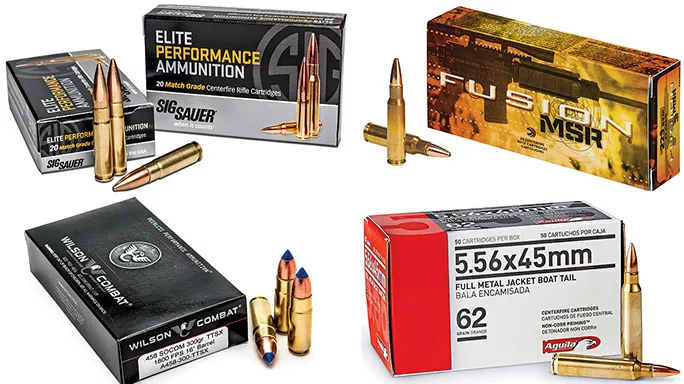When it comes to ammunition, there are various technical terms that can be confusing to newcomers or even experienced shooters. One such term is "ammo grain." Understanding what ammo grain means is crucial for anyone interested in firearms and ammunition. In this article, we will delve into the concept of ammo grain, explain its significance, and shed light on its relationship with bullet weight. So, let's get started and demystify the world of ammo grain!
I. What is Ammo Grain?
A. Definition of Ammo Grain Ammo grain refers to the unit of measurement used to quantify the weight of projectiles or bullets in the field of firearms and ammunition. It is denoted by the symbol "gr" and represents a small unit of mass equivalent to approximately 1/7000th of a pound.
B. Historical Background
The term "grain" originated in the Middle Ages, where it was initially used to measure the weight of seeds and precious stones. Over time, the concept was adopted in the field of firearms, where it became a standard unit for measuring bullet weight.
II. Understanding Grain Measurement
A. Conversion to Grams While grains are the primary unit used to measure bullet weight, it's important to note that the metric system relies on grams for weight measurements. One grain is approximately equal to 0.0648 grams. However, in the firearms industry, grains continue to be the preferred unit for measuring bullet weight.
B. How Grain Measurement Affects Bullet Weight The weight of a bullet directly influences its performance and characteristics. As the grain measurement increases, so does the bullet's weight. Heavier bullets typically have more energy upon impact, penetrate deeper, and may experience less wind drift. Conversely, lighter bullets tend to travel faster and have flatter trajectories.
III. Importance of Ammo Grain
A. Accuracy and Consistency The ammo grain plays a crucial role in determining the accuracy and consistency of a bullet's flight path. Manufacturers carefully select and match bullet weights to ensure consistent performance, reducing variations in trajectory and point of impact.
B. Recoil and Muzzle Velocity Bullet weight directly affect recoil and muzzle velocity. Heavier bullets generate more recoil and have lower muzzle velocities, while lighter bullets produce less recoil and higher muzzle velocities. Understanding these factors helps shooters choose the appropriate ammo grain for their specific needs.
IV. Different Ammo Grain Options
A. Common Grain Sizes Ammo grains are available in various sizes, ranging from as low as 15 grains for small-caliber rounds up to several hundred grains for large-caliber projectiles. Common grain sizes include 55 gr, 62 gr, 115 gr, and 147 gr, among others.
B. Applications and Considerations Different grain sizes are suited for specific applications. For instance, lighter grain sizes are often preferred for high-velocity shooting sports or varmint hunting, while heavier grain sizes are commonly used for long-range shooting or big game hunting. Understanding the intended purpose of the ammunition is essential for selecting the appropriate grain size.
V. Selecting the Right Ammo Grain
A. Firearms and Purpose The choice of ammo grain depends on the type of firearm and its intended purpose. Different firearms have specific recommendations for bullet weights and grain sizes to optimize performance and ensure safe operation. It is crucial to consult the firearm's manual or seek advice from experts to determine the suitable grain size for your specific firearm.
B. Manufacturer Recommendations Ammunition manufacturers often provide recommended grain sizes for their products based on extensive testing and research. These recommendations consider factors such as barrel length, twist rate, and intended use. It is advisable to follow the manufacturer's guidelines to maximize safety and performance.
VI. Packaging of Ammo Grain
A. The Role of Packaging Packaging plays a vital role in preserving the quality and integrity of ammunition. Cardboard ammo boxes with trays are commonly used for storing and transporting ammo grains. These boxes provide protection from moisture, dust, and physical damage, ensuring that the ammunition remains in optimal condition until it is ready for use.
B. Cardboard Ammo Boxes with Trays Cardboard ammo boxes with trays offer convenient storage and organization for different grain sizes. The trays help keep the cartridges separate, preventing contact and potential damage. Additionally, the cardboard material provides insulation against temperature fluctuations, maintaining the stability of the ammunition.
Conclusion
In conclusion, understanding ammo grain is essential for anyone involved in firearms and ammunition. It determines the weight and performance characteristics of bullets, influencing accuracy, recoil, and muzzle velocity. By considering factors such as firearm type, purpose, and manufacturer recommendations, individuals can select the right ammo grain for their specific needs. Furthermore, utilizing proper packaging such as cardboard ammo boxes with trays ensures the safe storage and transportation of ammunition, preserving its quality over time.

